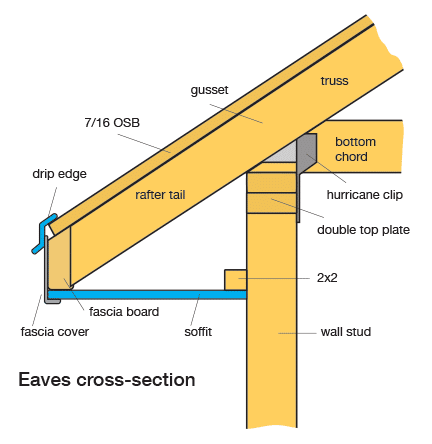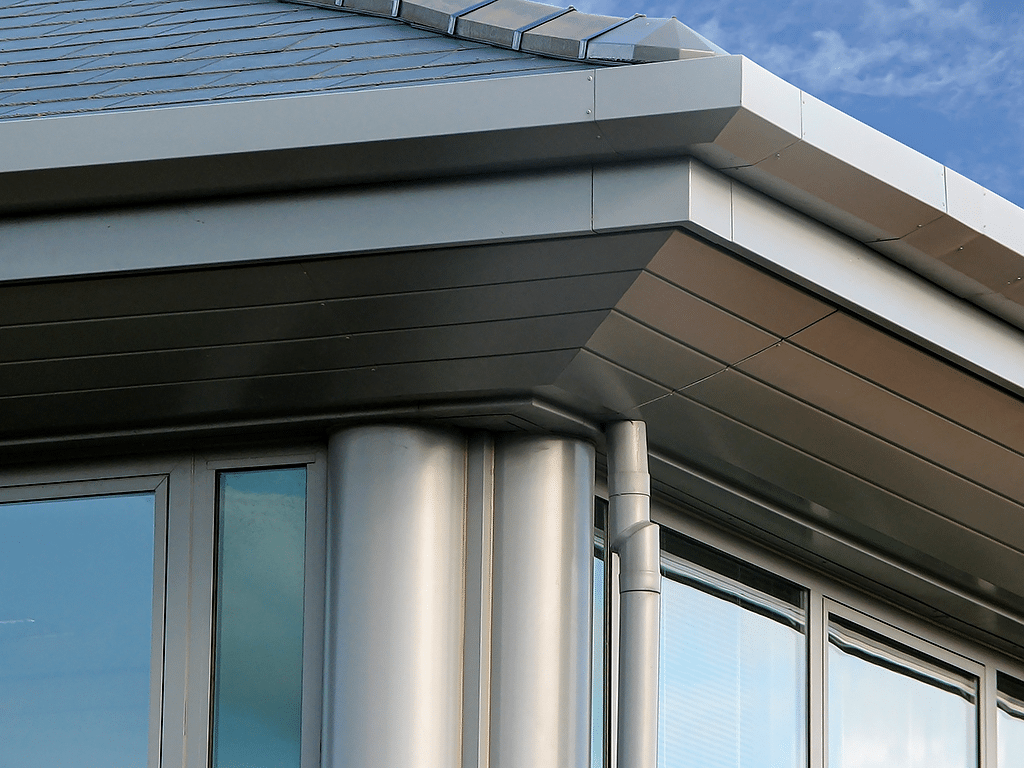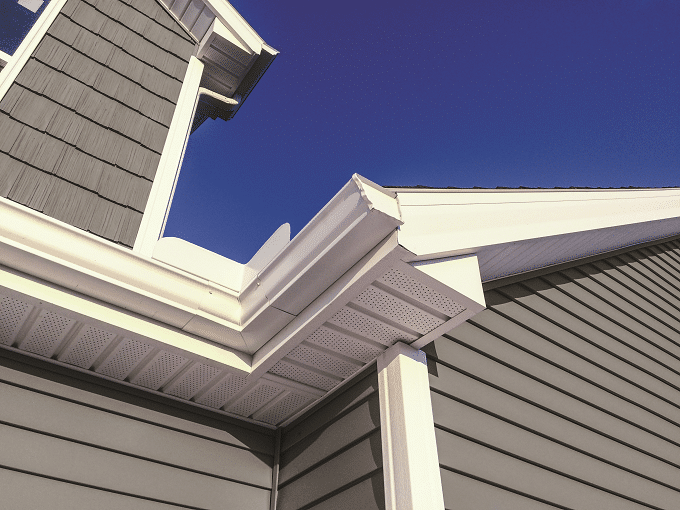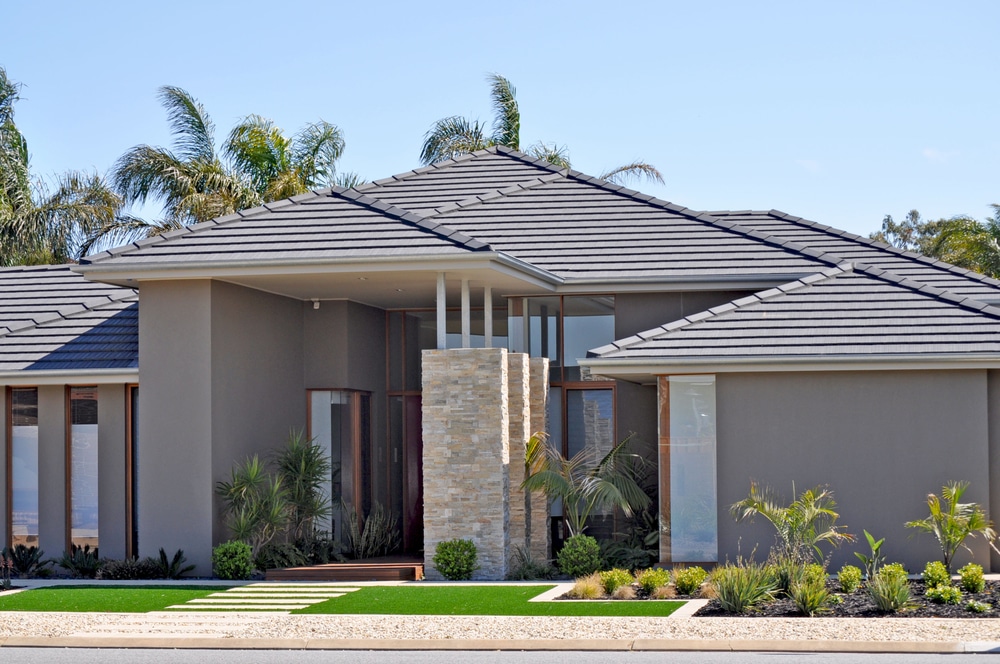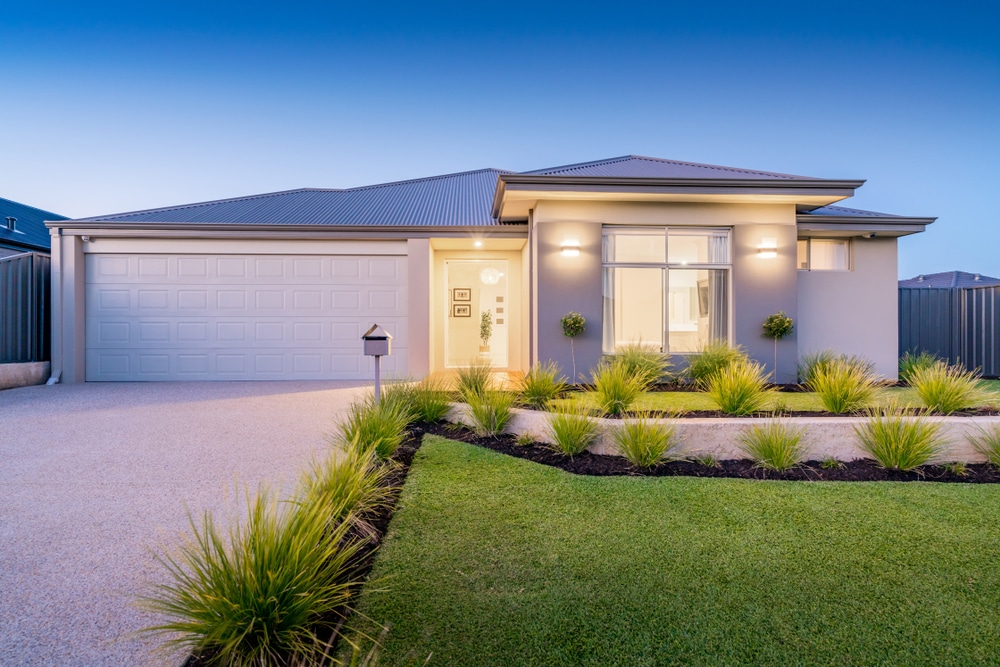
If you’ve just had a new roof installed, or are having some work done to your existing roof, it’s helpful to have a basic understanding of the terminology being used by roofing contractors. Fascias are a good example of this, because they’re a front-facing section of your roof that is crucial for keeping moisture and animals out.
What is a roof fascia?
Image from Emerald Home Improvements
A roof fascia is the vertical board (or frieze) that sits directly underneath the roof’s overhang, usually attached to the gutter. When combined with the soffit (the horizontal board that connects the walls with the fascia), they enclose the roof’s eaves.
Enclosing the roof’s eaves is important for a number of practical reasons. The rafters, trusses, and cavity of the roof are usually made of wood, and the fascia forms a part of the protective shield that prevents rain from getting into them. These wooden areas will start to rot if they are consistently wet, which can cause the roof to sag, threatening its structural integrity. In addition to excess rain, Australia has its fair share of animals too. Pigeons, sparrows, starlings, bats, rats, wasps, hornets, bees, and termites are just a few of the animals that would love to call your roof home, and a solid, well-maintained fascia and soffit blocks their entry and forces them to find somewhere else. Finally, the fascia is what secures the roof’s guttering, and keeps it in place. Because the fascia is directly underneath the guttering, and is often made of wood, it’s crucial to prevent rain from building up in the guttering, because it will spill onto the fascia and cause it to rot. Cleaning your guttering regularly is crucial for this reason.
In addition to their practical purposes, fascias are a front-facing aesthetic element that can make your house look more beautiful. Architects will decide on the material, colour, and height of your fascia, which affects how the property looks (for better or worse).
Fascias are sometimes called the “fascia board” or the “roofline,” although “fascia” by itself is the most common term in Australia.
What are the parts of a roof fascia?
Image from Pinterest
A roof fascia only really has one part: the fascia board itself. Some people may include the soffit in their description of “fascia,” but this is technically incorrect. The fascia is a single piece of material—usually wood or aluminium—that runs directly underneath the gutter.
It’s possible to purchase metal fascia covers for the fascia itself, to provide extra protection against the weather. If your guttering is working properly, and your fascia is kept dry, and primed and painted every five years or so, a fascia cover may not be necessary.
What is the difference between the fascia and soffit?
The fascia is the vertical board that runs directly underneath the gutter, and the soffit is the horizontal board that connects the fascia to the property’s wall (see the images above). Together, they enclose the eaves of the roof and protect it from rain and animals, and can also make the property look nicer.
Roof fascia types
There’s three common types of roof fascia: wooden, aluminium, and vinyl.
Wooden fascia
A wooden roof fascia. Image from IKO
Wooden fascias are the most common type for Australian homes. They are the cheapest material that can be used, and can also be painted to work with the home’s design. If the guttering system is maintained and working properly, a wooden fascia should last for years. But it’s recommended to prime and paint the fascia every five years or so. By contrast, a wooden house should be painted roughly every five to ten years, but the fascia needs a little more love because it’s directly underneath the guttering, so has a higher chance of getting wet. If you notice any discolouration or peeling spots on your fascia, you’ll want to fix these immediately to prevent rot from taking hold.
Some wood types rot more easily than others, so a builder may choose a different type of wood for fascias, such as cedar, redwood, or mesquite.
Aluminium fascia
An aluminium roof fascia. Image from Husk Architectural
Aluminium is a strong material that may not look as appealing as wood, but handles rain a lot better, and is too tough for bugs and termites to chew through. Unlike wood, a well-made aluminium fascia should be pretty much maintenance-free, lasting for 30 years or longer.
It also stands up well to extreme temperatures and is available in a variety of colours (although not as plentiful as paint for wood).
One downside to aluminium is that it’s more expensive than wood, but if you’re happy with how it looks, its durability can be well worth the cost.
Vinyl fascia
A vinyl roof fascia and soffit. Image from Gentek Building Products
Vinyl is the cheapest material that you can use for fascias. It doesn’t have the “premium” look of wood, but it’s an incredibly durable, water-resistant material that doesn’t rot, rust, or corrode, and so requires the least amount of maintenance compared to other types. The aesthetic is really the only downside of vinyl fascia, but who is looking that closely?
Should there be a gap between the roof and fascia?
One of the main purposes of a fascia is to prevent moisture and animals from getting into your roof cavity, so you might be concerned after finding a gap between the fascia and the roof. But don’t worry—this is perfectly normal. The gap is known as the “Builder’s Gap,” and it provides airflow to your roof cavity, which keeps the space cooler in summer and extends its life. The gap should be roughly 5cm at its maximum, which is too small for most animals to get into. And if you maintain your gutters properly, rain shouldn’t be able to reach the fascia, so you won’t need to worry about damp or rot.
Should the fascia match your roof colour? Fascia design examples
Whether a fascia matches the colour of the roof depends entirely on your design preferences. Having a fascia and roof with highly contrasting colours can look appealing because the fascia “frames” the bottom of the roof, and will stand out if the wall colour is also a contrasting colour. On the other hand, having the same colour for the fascia and roof makes the fascia seem almost like an extension of the roof (at least from far away). Many people choose to colour the fascia the same as the gutters.
Check out some of the images below for different design examples.
In this example, the fascia is a different colour to the gutters and roof, but the same colour as the walls, which makes it blend in. Image from Shutterstock.
For this home, the fascia is the same colour as the gutters and walls, but a different colour to the roof. Image from Shutterstock.
In this example, the roof and wall colours are a close grey match, while the fascia is a lighter colour, creating a “frame” effect for the roof. Image from Shutterstock.
For this home, the fascia is the same colour as the roof. It looks almost like an extension of the roof itself. Image from Shutterstock.
How much does it cost to replace a roof fascia?
Usually, when you replace a fascia, you also replace your gutters. To replace these on a small-sized home costs roughly $4,300 in Australia, but this cost varies dramatically depending on the materials used, the style of the house, and your location.
If you’d like a quote on replacing your fascia and guttering, get in touch and we’ll be happy to help.


